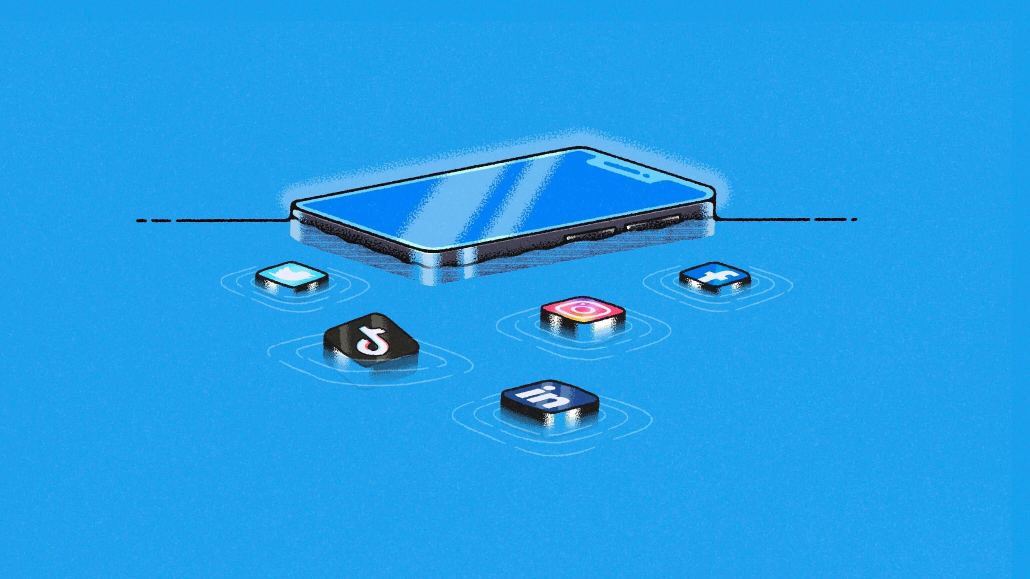Save 50% on a 3-month Digiday+ membership. Ends Dec 5.
Trading paid media for social-first: Inside Riot Games and We Are Social’s ‘Wild Rift’ campaign

With an audience as native to social media as mobile gamers, who needs to pay for ads?
This is the driving philosophy behind Riot Games’ ongoing campaign to promote the second anniversary of its popular mobile game “League of Legends: Wild Rift.” The result of a collaboration between Riot and creative agency We Are Social, the campaign began in September and will run until roughly Nov. 17, when the next patch of the game is released.
Notably, the social-first campaign is entirely devoid of paid media, the usual backbone of traditional digital marketing.
“With ‘Wild Rift‘ specifically being a mobile game, it does lend itself well to social platforms, particularly Twitter and Instagram,” said Nicole Kim, a brand manager at Riot Games who worked on the campaign. “For us, the focus on social media has also been part of our ongoing initiative to build a strong community; with this social-first approach, we wanted to focus a bit more on our players and the channels that they often frequent.”
While the campaign is primarily rooted in Twitter and Instagram, it also incorporates content across a variety of other social media channels, including YouTube, Facebook, TikTok and Chinese social platforms such as Bilibili and Weibo. The content specifically created for social ranges from Wild Tweets, an activation highlighting past and present tweets from regular “Wild Rift” fans, to Instagram photo shoots with “Wild Rift” cosplayers.
The “Wild Rift” campaign represents an experiment with an entirely organic, non-paid social campaign to promote one of Riot’s games. Although the numbers haven’t come in yet, both Riot and We Are Social are confident that the campaign has already been a success based on the warm feedback they have received from online “Wild Rift” fans.
“The way the comments played out in there, I almost felt like I was writing them myself,” said We Are Social associate creative director Erik Donham. “I promise, I wasn’t.”
Anecdotal evidence aside, We Are Social and Riot’s social-first campaign strategy is borne out by some relevant statistics. In the first half of 2022, Twitter users posted a record 1.5 billion tweets about gaming, representing a 36 percent year-over-year increase in gaming activity on the platform, according to data released by Twitter Gaming. As activity continues to rise on many social media channels, gamers are leading the charge.
This is not much of a surprise. After all, gamers are a digital-native audience accustomed to spending time on their phones.
“These are the people that are leading the conversation online, but they’re also maybe more everyday players; they’re not necessarily the people that are out there winning the world championship,” Donham said. “So while they’re well-known to all the fans out there, they don’t typically get direct recognition from the game developers themselves.”
There’s also a financial incentive for Riot to pursue a social-first strategy. Building campaigns around user-generated content is much cheaper than paying for traditional media placement. With a potential recession on the horizon and gaming and esports businesses like Riot reporting revenue declines, less pricey social campaigns could be one appealing way to help right the ship.
As the “Wild Rift” anniversary campaign rolls out, Riot is keeping a close eye on its performance to gauge the effectiveness of its social-first strategy for future campaigns. Riot is mostly interested in tracking engagement metrics and sentiment, according to Kim, who said her focus was “making sure that our marketing campaign passes our average views and social conversations compared to some of our previous campaigns.”
If the warm reception to the campaign on social media has been any indication, social-first, organic strategies could represent the future of gaming and esports marketing.
More in Marketing

Ulta, Best Buy and Adidas dominate AI holiday shopping mentions
The brands that are seeing the biggest boost from this shift in consumer behavior are some of the biggest retailers.

U.K. retailer Boots leads brand efforts to invest in ad creative’s data layer
For media dollars to make an impact, brands need ad creative that actually hits. More CMOs are investing in pre- and post-flight measurement.

‘AI is permeating everything we do’: How Guitar Center developed 2 AI tools this year
This summer, the company launched a chatbot called Rig Advisor to help customers find the right instruments and products.
Ad position: web_bfu




